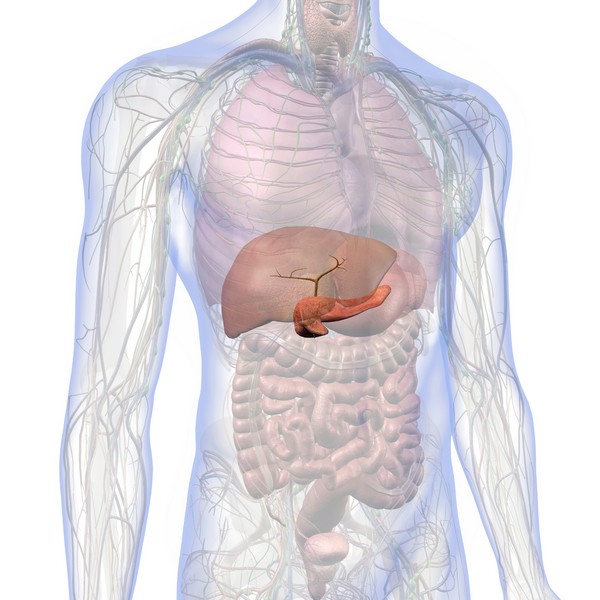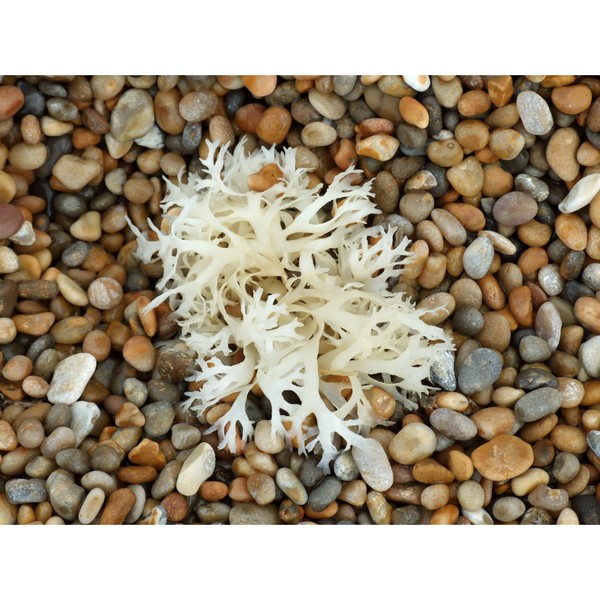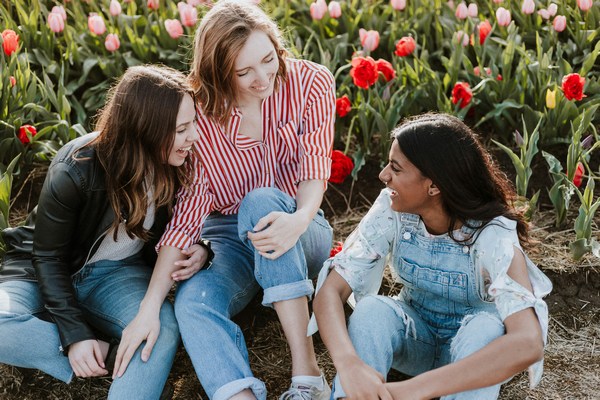Key Takeaways
- Elimination diets identify food intolerances by removing and reintroducing specific foods.
- Divided into two phases: elimination and reintroduction.
- Items like gluten, soy, and nuts are often removed first.
- Gradual reintroduction helps identify food triggers.
- Close monitoring and professional guidance are essential.
Elimination Diets

Elimination diets identify food sensitivities through the process of removing specific foods and gradually reintroducing them.
This method helps to find which foods might cause adverse reactions, particularly for those with chronic digestive issues or unexplained symptoms.
Common Reasons for Elimination Diets
People use elimination diets to address food allergies, intolerances, and chronic conditions. These diets help pinpoint specific foods that may be contributing to symptoms.
Types of Elimination Diets

- Specific Carbohydrate Diet (SCD): Avoids certain carbohydrates believed to aggravate digestive disorders.
- Low FODMAP Diet: Excludes foods high in fermentable carbohydrates that trigger IBS.
- Basic Elimination Diet: Removes common allergens, such as gluten, soy, dairy, and eggs.
- Autoimmune Protocol (AIP): Eliminates foods that might cause inflammation in autoimmune conditions.
Foods Commonly Eliminated
During the elimination phase, the following foods are often removed:
- Gluten
- Soy
- Nuts
- Nightshade vegetables
- Dairy
- Eggs
The Elimination Phase
This phase typically lasts 2-4 weeks. All suspect foods are removed. A food diary is essential for tracking symptoms like digestive issues, skin reactions, and fatigue.
The Reintroduction Phase
Foods are reintroduced one at a time, spaced out every 3-4 days. This slow process identifies any adverse reactions and determines which foods are safe.
Challenges and Considerations

Elimination diets can be difficult due to the strict removal of certain foods. Nutritional deficiencies may occur if not managed correctly.
Social situations may also present challenges, making professional supervision important.
Benefits and Effectiveness
Elimination diets often result in significant health improvements. Identifying and removing trigger foods reduces symptoms and enhances well-being.
When to Seek Professional Help
Professional guidance is necessary in complex health situations or if there is a risk of nutritional imbalance. A healthcare professional can provide personalized advice and support throughout the diet.
Conclusion
Elimination diets effectively identify food sensitivities. Individuals can discover which foods trigger symptoms and make healthier dietary choices by carefully following the elimination and reintroduction phases.
FAQs
How long should the elimination phase last?
Typically, the elimination phase lasts between 2-4 weeks, depending on individual needs.
What should I do if I have a reaction during reintroduction?
Stop consuming the food immediately and allow symptoms to subside before trying another food.
Can elimination diets lead to nutritional deficiencies?
Yes, they can, if not managed properly. It’s crucial to monitor your diet closely.
Are elimination diets safe for children?
Elimination diets can be safe for children with supervision from a healthcare professional.
How do I know if I need an elimination diet?
Consider an elimination diet if you experience unexplained symptoms like digestive discomfort or chronic fatigue that might be linked to food sensitivities.
Research
Best, C.H. and McHenry, E.W., 1931. Histamine. Physiological Reviews, 11(4), pp.371-477.
Bachert, 1998. Histamine–a major role in allergy?. Clinical & Experimental Allergy, 28(S6), pp.15-19.
Brown, R.E., Stevens, D.R. and Haas, H.L., 2001. The physiology of brain histamine. Progress in Neurobiology, 63(6), pp.637-672.
Colombo, F. M., Cattaneo, P., Confalonieri, E., & Bernardi, C. (2017). Histamine food poisonings: A systematic review and meta-analysis. Critical Reviews in Food Science and Nutrition, 58(7), 1131–1151. https://doi.org/10.1080/10408398.2016.1242476
Haas, H.L., Sergeeva, O.A. and Selbach, O., 2008. Histamine in the nervous system. Physiological Reviews.
Huang, J.F. and Thurmond, R.L., 2008. The new biology of histamine receptors. Current Allergy and Asthma Reports, 8(1), pp.21-27.
Hungerford, J. M. (2021). Histamine and Scombrotoxins. Toxicon, 201, 115-126.
https://doi.org/10.1016/j.toxicon.2021.08.013
Jutel, M., Akdis, M. and Akdis, C.A., 2009. Histamine, histamine receptors and their role in immune pathology. Clinical & Experimental Allergy, 39(12), pp.1786-1800.
Jutel, M., Watanabe, T., Akdis, M., Blaser, K. and Akdis, C.A., 2002. Immune regulation by histamine. Current Opinion in Immunology, 14(6), pp.735-740.
Best, C.H. and McHenry, E.W., 1931. Histamine. Physiological Reviews, 11(4), pp.371-477.
Bachert, 1998. Histamine–a major role in allergy?. Clinical & Experimental Allergy, 28(S6), pp.15-19.
Brown, R.E., Stevens, D.R. and Haas, H.L., 2001. The physiology of brain histamine. Progress in Neurobiology, 63(6), pp.637-672.
Busby, E., Bold, J., Fellows, L., & Rostami, K. (2018). Mood Disorders and Gluten: It’s Not All in Your Mind! A Systematic Review with Meta-Analysis. Nutrients, 10(11), 1708. https://doi.org/10.3390/nu10111708
Colombo, F. M., Cattaneo, P., Confalonieri, E., & Bernardi, C. (2017). Histamine food poisonings: A systematic review and meta-analysis. Critical Reviews in Food Science and Nutrition, 58(7), 1131–1151. https://doi.org/10.1080/10408398.2016.1242476
Dionne, J., Ford, A.C., Yuan, Y., Chey, W.D., Lacy, B.E., Saito, Y.A., Quigley, E.M.M. and Moayyedi, P., 2018. A Systematic Review and Meta-Analysis Evaluating the Efficacy of a Gluten-Free Diet and a Low FODMAPS Diet in Treating Symptoms of Irritable Bowel Syndrome. American Journal of Gastroenterology, [online] 113(9), pp.1290–1300. https://doi.org/10.1038/s41395-018-0195-4.
Gundry, S.R. and Buehl, O.B., 2017. The Plant Paradox: The Hidden Dangers in" Healthy" Foods That Cause Disease and Weight Gain. New York: Harper Wave.
Haas, H.L., Sergeeva, O.A. and Selbach, O., 2008. Histamine in the nervous system. Physiological Reviews.
Huang, J.F. and Thurmond, R.L., 2008. The new biology of histamine receptors. Current Allergy and Asthma Reports, 8(1), pp.21-27.
I. Spolidoro, G. C., Lisik, D., Nyassi, S., Ioannidou, A., Ali, M. M., Amera, Y. T., Rovner, G., Khaleva, E., Venter, C., Worm, M., Vlieg-Boerstra, B., Sheikh, A., Muraro, A., Roberts, G., & Nwaru, B. I. (2024). Prevalence of tree nut allergy in Europe: A systematic review and meta-analysis. Allergy, 79(2), 302-323. https://doi.org/10.1111/all.15905
Jutel, M., Akdis, M. and Akdis, C.A., 2009. Histamine, histamine receptors and their role in immune pathology. Clinical & Experimental Allergy, 39(12), pp.1786-1800.
Jutel, M., Watanabe, T., Akdis, M., Blaser, K. and Akdis, C.A., 2002. Immune regulation by histamine. Current Opinion in Immunology, 14(6), pp.735-740.
Kovacova-Hanuskova, E., Buday, T., Gavliakova, S., & Plevkova, J. (2015). Histamine, histamine intoxication and intolerance. Allergologia et Immunopathologia, 43(5), 498-506. https://doi.org/10.1016/j.aller.2015.05.001
Levi, R., Owen, D. and Trzeciakowski, J., 1982. Actions of Histamine on the. Pharmacology of Histamine Receptors, 236.
Lieberman, P., 2011. The basics of histamine biology. Annals of Allergy, Asthma & Immunology, 106(2), pp.S2-S5.
Lionetti, E., Pulvirenti, A., Vallorani, M., Catassi, G., Verma, A. K., Gatti, S., & Catassi, C. (2017). Re-challenge Studies in Non-celiac Gluten Sensitivity: A Systematic Review and Meta-Analysis. Frontiers in Physiology, 8, 287133. https://doi.org/10.3389/fphys.2017.00621
Maintz, L. and Novak, N., 2007. Histamine and histamine intolerance. The American Journal of Clinical Nutrition, 85(5), pp.1185-1196.
MacGlashan, D. (2003). Histamine: A mediator of inflammation. Journal of Allergy and Clinical Immunology, 112(4), S53-S59. https://doi.org/10.1016/S0091-6749(03)01877-3
McWilliam, V., Koplin, J., Lodge, C., Tang, M., Dharmage, S. and Allen, K., 2015. The Prevalence of Tree Nut Allergy: A Systematic Review. Current Allergy and Asthma Reports, [online] 15(9). https://doi.org/10.1007/s11882-015-0555-8.
Milroy, T. H. (1931). THE PRESENT STATUS OF THE CHEMISTRY OF SKELETAL MUSCULAR CONTRACTION. Physiological Reviews.
https://doi.org/10.1152/physrev.1931.11.4.515
Parsons, M.E. and Ganellin, C.R., 2006. Histamine and its receptors. British Journal of Pharmacology, 147(S1), pp.S127-S135.
Pinto-Sánchez, M. I., Verdu, E. F., Liu, E., Bercik, P., Green, P. H., Murray, J. A., Guandalini, S., & Moayyedi, P. (2016). Gluten Introduction to Infant Feeding and Risk of Celiac Disease: Systematic Review and Meta-Analysis. The Journal of Pediatrics, 168, 132-143.e3. https://doi.org/10.1016/j.jpeds.2015.09.032
Rai, K.P., Pradhan, H.R., Sharma, B.K. and Rijal, S.K., 2013. Histamine in foods: Its safety and human health implications. J Food Sci Technol Nepal, 8, pp.1-11.
Reite, O.B., 1972. Comparative physiology of histamine. Physiological Reviews, 52(3), pp.778-819.
Soares-Weiser, K., Takwoingi, Y., Panesar, S. S., Muraro, A., Werfel, T., Hoffmann-Sommergruber, K., Roberts, G., Halken, S., Poulsen, L., Vlieg-Boerstra, B. J., & Sheikh, A. (2014). The diagnosis of food allergy: A systematic review and meta-analysis. Allergy, 69(1), 76-86. https://doi.org/10.1111/all.12333
Taylor, S.L. and Eitenmiller, R.R., 1986. Histamine food poisoning: toxicology and clinical aspects. CRC Critical Reviews in Toxicology, 17(2), pp.91-128.
Teresa, M., Luz, M., & Carmen, M. (2018). Biogenic Amines in Plant-Origin Foods: Are they Frequently Underestimated in Low-Histamine Diets? Foods, 7(12), 205. https://doi.org/10.3390/foods7120205
Turner, P. J., Patel, N., Ballmer-Weber, B. K., Baumert, J. L., Blom, W. M., Brooke-Taylor, S., Brough, H., Campbell, D. E., Chen, H., Chinthrajah, R. S., Crevel, R. W., Dubois, A. E., Ebisawa, M., Elizur, A., Gerdts, J. D., Gowland, M. H., Houben, G. F., Hourihane, J. O., Knulst, A. C., . . . Remington, B. C. (2022). Peanut Can Be Used as a Reference Allergen for Hazard Characterization in Food Allergen Risk Management: A Rapid Evidence Assessment and Meta-Analysis. The Journal of Allergy and Clinical Immunology: In Practice, 10(1), 59-70. https://doi.org/10.1016/j.jaip.2021.08.008
Wahls, T. L., Chenard, C. A., & Snetselaar, L. G. Review of Two Popular Eating Plans within the Multiple Sclerosis Community: Low Saturated Fat and Modified Paleolithic. Nutrients, 11(2), 352. https://doi.org/10.3390/nu11020352
White, M.V., 1990. The role of histamine in allergic diseases. Journal of Allergy and Clinical Immunology, 86(4), pp.599-605.
Coping with Pet Allergies: Tips & Advice
Key Highlights Pet allergies often cause sneezing, coughing, itchy eyes, and skin rash. Pet allergens are in the saliva, urine, and dander of furry animals….
Histamine: What You Should Know
Key Takeaways Histamine’s Role: Vital in immune responses, digestion, and as a neurotransmitter in the central nervous system. Histamine Production: Produced in mast cells and…
Allergy-Friendly Pets
Key Highlights Hypoallergenic pets are great for people with pet allergies, as they produce fewer allergens like dander, saliva, and proteins that can trigger symptoms….
Adrenal Cocktail: Recipe and Benefits
Key Takeaways The adrenal cocktail supports adrenal health and maintains energy levels. Combines potassium, sodium,…
7 Simple Tips for Lowering Blood Pressure Naturally
Maintaining healthy blood pressure levels is essential for overall well-being, as high blood pressure can…
Non-Alcoholic Fatty Liver Disease (NAFLD)
Key Takeaways NAFLD involves fat buildup in the liver not caused by alcohol. Commonly associated…
Deep Nutrition by Catherine Shanahan, M.D.
Key Takeaways Traditional diets positively influence genetic expression and overall health. Modern diets high in…
Carnivore Diet: Benefits, Risks, Food List & More
Key Takeaways The carnivore diet is a keto diet that only allows for animal-based foods,…
Metabolic Health: What It Means and How to Improve It
Key Takeaways Metabolic health reflects how well your body processes energy and maintains stable blood…
Alzheimer’s Disease: Symptoms, Causes, Treatment
Key Takeaways Alzheimer’s disease is a progressive neurodegenerative disorder affecting memory, thinking, and behavior. Oxidative…
Benefits of Sea Moss Explained
Key Takeaways Rich in Nutrients: Sea moss is packed with essential vitamins, minerals, and antioxidants,…
7 Remedies for Kidney Stones: A Comprehensive Guide
Key Takeaways Staying well-hydrated and adopting a balanced diet can help prevent kidney stones. Knowing…
Mental Benefits of Learning a New Language
Key Takeaways: Enhances brain volume and memory. Improves cognitive flexibility, multitasking, and executive functions. Delays…
5-HTP: Natural Ways to Boost Serotonin and Improve Mood
Key Takeaways: 5-HTP is a natural compound that helps boost serotonin levels in the brain….













